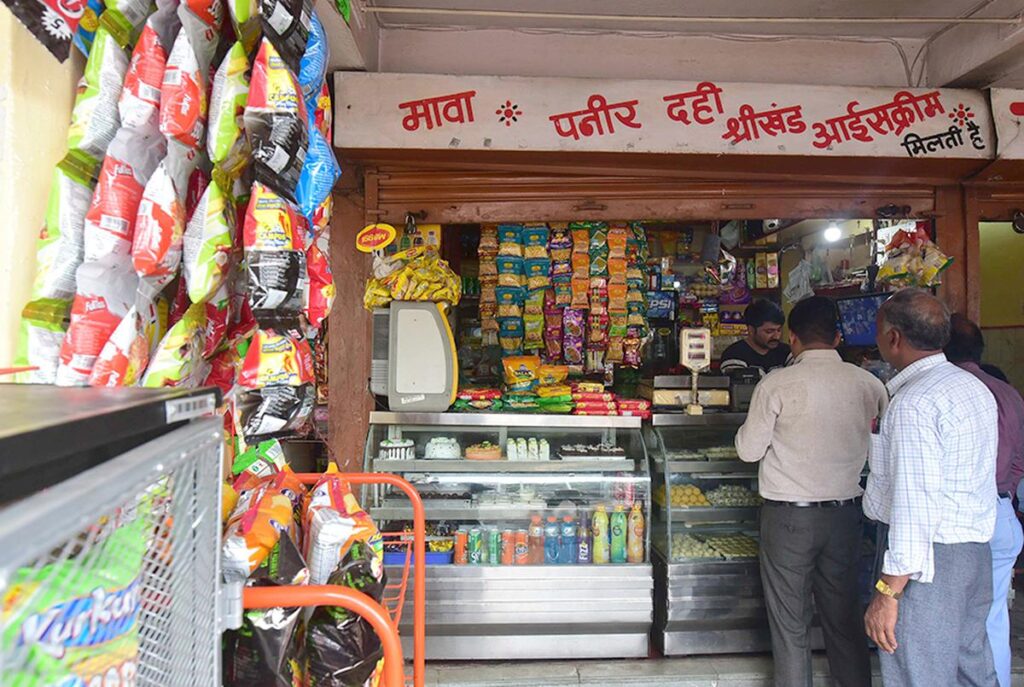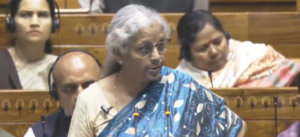Five years ago, India began its tryst with a brand new tax, one that promised deliverance to all Indians. Like most moves of the Narendra Modi government, the introduction of Goods and Services Tax (GST) was also filled with theatrics—a midnight session of Parliament, no less. Never was so much promised to so many in the name of a tax.
After five years, the tax remains shrouded in mystery. The political economy of the tax is particularly worrisome for two reasons. First, the tax threatens the foundational values of federalism that define the nature of fiscal relations in the Indian Union. However, a less appreciated aspect of the tax has been the manner in which it has significantly skewed the pitch against smaller—particularly informal—businesses, implicitly favouring larger business entities. The functioning of the GST regime has been divisive in several ways, which calls for urgent correction. Modi promised the citizen in 2017 that she would be liberated from the menace of “tax terrorism”. Indian industry—big and small—was promised a simpler, kinder tax. The States were promised higher revenues buoyed up by all the good effects that the new tax would bring in. In keeping with the new-found “nationalist” ideals espoused by the regime, the then Finance Minister Arun Jaitley repeatedly invoked the “one nation one tax” slogan, promising a unified nationwide common market, as if Indians had not realised it 70 years earlier.
Under a blitzkrieg of media commentary, a lot of it recklessly euphoric, Indians were told that national output, as measured by the gross domestic product (GDP), would increase by one or even two percentage points. How a tax would increase output, something that has never been demonstrated anywhere in the world, was lost in the utterly one-sided cacophony.
That was not all. States were told that their tax revenues, as a proportion of their output (gross state domestic product or GSDP), which had been in decline since about 2010, would not just be arrested but would actually increase by two percentage points as a proportion of their GSDP. Even more, bewildered Indian consumers were told that these moves would actually result in prices going down by about 10 per cent. Surely, recalling these promises five years on would be an embarrassment for the Modi government.
In hindsight, GST was the second part of the double whammy that hit India, after the first in the form of demonetisation in November 2016. Another followed barely three years later in the form of the pandemic, the effects of which are still unravelling.
A striking feature of these three strikes has been the fact that the chief victims in each episode have been the same—small and informal businesses. And the States have been saddled with the responsibility of repairing the damage caused to incomes and livelihoods, even as their revenues have been under pressure.
Fatal flaws in GST design
The cornerstone of the constitutional provisions governing the authority to levy taxes in the Indian Union was the separation of powers of taxation. The constitutional design acknowledged that since most powers rested with the Centre, the States’ only countervailing power was their ability to levy taxes on the sales of goods (taxes on services came much later).
The States’ autonomy to levy such taxes has been repeatedly affirmed by courts, most recently by the Supreme Court ruling that this continues even under the GST regime. Indeed, the fact that each State had to enact legislation prior to the advent of GST, and the reality that the Union Government could not impose a single national law on GST, confirms this decisively.
The GST design revolves around the concept of a single unified tax replacing two sets of taxes in force until then: one was sacrificed by the Centre and the other by the States (see infographic). Two important features of sales tax were critical in determining the India-specific characteristics of GST.
First, the States surrendered sales tax, their single biggest tax lever that contributed almost two-thirds of all their revenues.
Second, since sales tax was levied on final sales—that is, it was in the nature of a tax on consumption—it had a much wider tax base unlike the taxes on production (central excise, for example) that were being collected by the Centre.
While it is true that the new and growing sources of revenue for the Centre from the delivery of services would be shareable with the States under the GST regime, the States would still stand to lose their autonomy in determining the tax rates on the sale of goods.
Studies on the impact of GST have shown that the realisation of revenues from sales tax—and the value added tax (VAT) that replaced it—actually fell in several States. For instance, a recent study conducted by the Gulati Institute of Finance and Taxation (GIFT) in Thiruvananthapuram showed that revenues from several important commodities fell significantly after the imposition of GST.
This is not difficult to comprehend, given the shareable nature of the GST on the sale of commodities. The 50:50 split in the GST rate, which comprises the State GST (SGST) and the Central GST (CGST), means that at every single rate of GST, the States are effectively getting just half of what they would have received under a sales tax or VAT regime.
Decline in States’ tax collections
Data on the tax collections of States affirmed that States’ revenues as a proportion of the size of their economies, as reflected in their GSDP, has indeed declined significantly across the board after the imposition of GST. The measure of States’ own tax revenues as a proportion of GSDP has been remarkably stagnant, hovering around 6.6 per cent for all States put together between 2013-14 and 2020-21 (see figure 1).
This proportion declined significantly in this period even in industrially advanced States such as Maharashtra, Gujarat, Tamil Nadu, and Karnataka, leave alone backward States. It fell from 10.4 per cent to 6 per cent in Karnataka; from 7.8 per cent to 6.5 per cent in Maharashtra; from 8.2 per cent to 5.8 per cent in Gujarat; and from 9.6 per cent to 6.5 per cent in Tamil Nadu.
This imbalance was recognised explicitly in the GST design, which resulted in an assurance to the States that the Centre would compensate the shortfall on account of GST, assuming a normative revenue growth of 14 per cent per annum. Moreover, the Centre protected itself by levying a cess on luxury goods, ensuring that it did not have to generate its own funds to meet the States’ shortfall.
The issue of compensation to States, which is being passed off as an indication of the Centre’s magnanimity, has to be viewed in the context of the lopsided structure of GST in which the States were asked to sacrifice far more than the Centre. In fact, it is evident that the Centre has gained disproportionately as a result of the actual implementation of GST.
The explicit recognition of the States’ losses was the reason why a mechanism to automatically compensate the states for a period of five years was established through Parliamentary legislation. That ended on June 30, and the question of its continuation has been put on limbo, imposing even greater anxiety on the States. Significantly, in the GST Council, which has been reduced to a space for setting rates after interminable rounds of discussion, the Centre has disproportionate clout.
Since the Centre holds a one-third share of the vote in the council, it effectively enjoys veto powers that can snuff out dissenting voices from the States. Logically, it does not make sense to limit the duration of the compensation when it is obvious that States stand to lose because of the GST’s design.
It is almost comical how every month’s GST revenue numbers in the last few months have been welcomed as “the highest-ever” in the media, revealing an utter ignorance of economic statistics. Here is why: First, since tax revenues are always expressed in current prices, it does not take great expertise to appreciate that the rupee earned by the government last year is not the same as the rupee earned today, what with inflation raging at unprecedented levels.
Second, tax revenues ought to be anchored in the size of the economy to provide a true estimate of what these revenue figures mean. That is, in order to understand what the tax revenues mean, they have to be seen relative to the size of the economy.
Figure 2 shows overall tax revenues as a proportion of gross value added (GVA). GVA is chosen as the denominator here, instead of GDP, because GDP already subsumes taxes and using it would amount to double counting taxes relative to the size of the economy.
The data show that GST revenues as a proportion of GVA have been remarkably stagnant since GST began. Between 2018-19, the first full financial year after GST was implemented, and 2021-22, overall GST revenues as a proportion of GVA have risen from 6.29 per cent to 6.44 per cent, an insignificant increase.
More worryingly, the States’ share of GST revenues, expressed as a percentage of national GVA, has also stagnated, belying the promise that GST will provide a boost to the States’ revenues. The unfairness of the situation is underlined by the fact that while the States have lost the only significant tax lever they had before GST, the Centre has had other options to boost revenues.
Over the past few years, the Modi government’s excessive reliance on taxes on petroleum and petroleum products has provided it with windfall revenues, mostly through special excise duties, which are not shareable with States.
More recently, the export taxes imposed on petroleum products, which have generated windfall gains for private petroleum producers, are also not shareable with States; neither are the recent import duties on gold. These examples highlight how lopsided the powers of taxation are in the Indian Union; GST has actually skewed them even further.
Impact on small units
While GST’s impact on Centre-State financial relations has attracted some attention, the differential impact it has had on economic agents has been grossly underreported.
While GST, by its very design, provides incentives to larger enterprises by allowing them to set off their input tax “credits” against their dues, smaller units that exist on a standalone basis either incur higher costs relative to their operations or are left out of the GST game.
In either case, they incur higher costs relative to large units, which renders them less competitive. This is what explains the groundswell of disenchantment, even anger, against the GST regime.
As small-scale entrepreneurs have pointed out, the cost of compliance is not insignificant; moreover, they complain that the nature of the regime and the endless tweaks to the system require an inordinate amount of time and resources, which impair them severely.
In short, GST has had the effect of actually promoting the concentration of market shares within industry, favouring large enterprises at the expense of the small and weak. Tax administrators had warned of this possibility at the time GST was introduced.
As several commentators have pointed out, the stuttering economic revival since the pandemic has been characterised by what has been termed as a K-shaped recovery; while sections of large businesses have gained significantly, smaller units remain mired in deep distress.
The current nature of GST perpetuates this duality. The substantial — and disproportionate — benefits that large conglomerates have enjoyed perhaps explains why large sections of the business media have, without scrutiny, sold the idea that what is good for big business is good for all Indians.
A more sagacious approach by the Centre would have been to adopt a more gradualist approach to the implementation of GST. This would not just have been an act of charity;the fact that the Centre has as much to gain by way of GST revenues, especially because of the 50:50 split, implies that this would have been a more sensible approach.
Speaking to Frontline, K.J. Joseph, Director, GIFT, said: “The Centre ought to have invested much more in capacity-building, not just with respect to the States but also with smaller units, because it has much to gain from this approach.”
The question of including petroleum products within the ambit of GST is not merely a technical issue as it is often made out to be. Logically speaking, since petroleum products are universal inputs that go into almost every conceivable kind of economic activity, their non-inclusion deprives large sections of economic entities of the input tax credits.
While it is true that this is a serious anomaly in GST’s current design, the fact of the matter is that States are wary of losing control over the significant revenues they now garner from taxes on such products. It is obvious that this anomaly cannot be rectified without bringing the issue under a more wide-ranging dialogue on GST that recognises the significant losses States have suffered in the new regime.
It is obvious that the euphoria over GST has dissipated. It is likely that the States, even those aligned to the ruling coalition at the Centre, will come under pressure because of the squeeze on their revenues.
With the room for manouevring diminishing rapidly, particularly because of the economic slowdown, the States are likely to bear the brunt of the disaffection that GST has generated. The political economy of GST is such that the regional parties are likely to be the carriers of the dissent against GST, particularly because of the pressure faced by smaller units.
The tumult the tax has attracted around it guarantees that it may well unravel, sooner rather than later, unless it is sent back to the drawing board for a fresh redesign that fixes its serious shortcomings.
(The writer is former associate editor, ‘Frontline’, and has worked for The Hindu Group for over three decades. Courtesy: Frontline magazine.)




